The Moose is Algonquin Park’s largest animal (by both size and weight) and is certainly one of its primary and most recognizable icons. A trip to Algonquin Park is complete when you are privileged to see a moose, especially if it is a bull moose with an impressive array of antlers.
Deb and I have often seen moose over the years we’ve been visiting Algonquin Park but unfortunately the opportunity to photograph a bull moose with its majestic antlers had always eluded us. However this fall it was especially gratifying to see a bull moose after so many years of trying.
A while back my friends Arni, Eleanor, Joyce and I joined Michael Bertelsen (Algonquin Park Photography Tours) in the spring of the year where we saw a number of moose including bulls, cows and calves. You can read the account of this trip via this link (Moose In Algonquin Park). In the spring of the year moose are largely feeding on aquatic vegetation and the antlers on the bulls are covered with velvet which supplies blood for the rapidly growing antlers. Every fall the bull moose scrapes its antlers on trees causing the velvet to be torn off revealing the mature antlers beneath. This action causes the bull’s testosterone levels to rise and is part of the process that marks the onset of the mating season, or rut, which is typically between mid September and mid October. In the early winter months the bull moose sheds its antlers by breaking them off on a tree and soon thereafter starts work on growing next seasons bigger and better antlers.
Moose calves are born in early June each year and the cows have one or sometimes two calves. The calves stay with the cow for almost a year when mom forcibly releases her calf to fend for itself before she gives birth to her next calf.
Below is a cow with her two calves photographed in the park late this summer. We enjoyed watching this family graze in the marsh for at least thirty minutes before they wandered off into the forest.
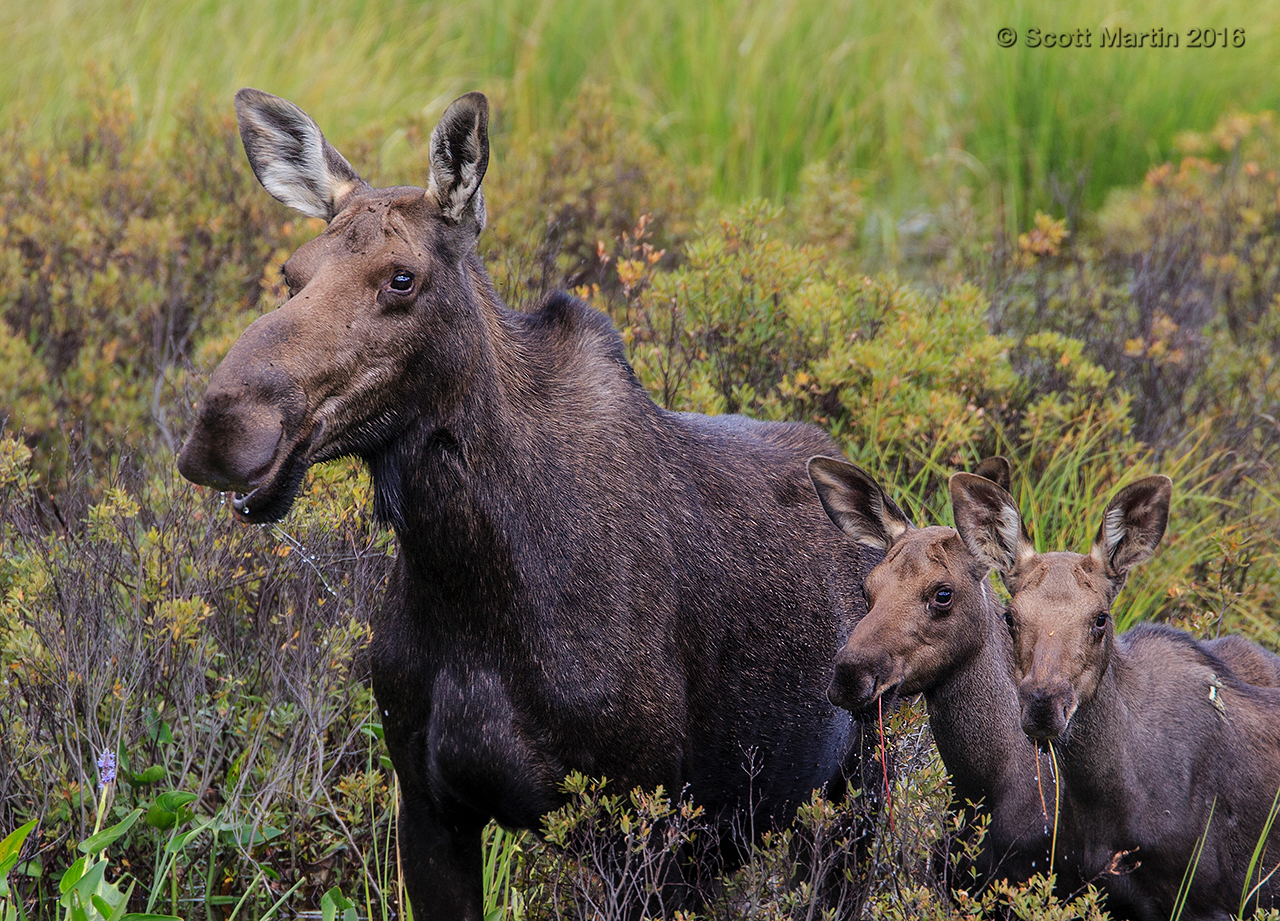
I was happy to capture this next image with all three moose having mouths full of lily pads.
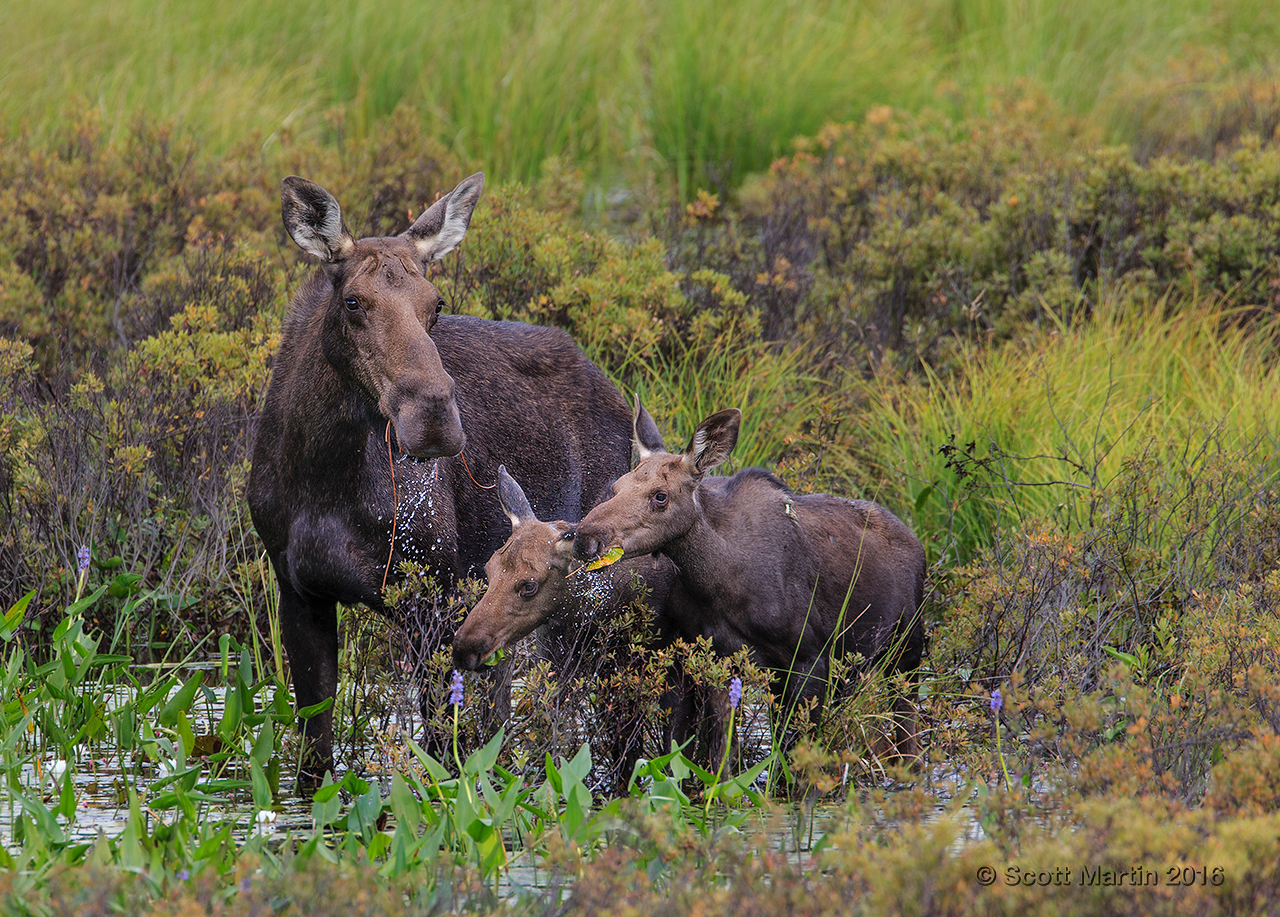
For their first year of life the little ones are never far from their mom.
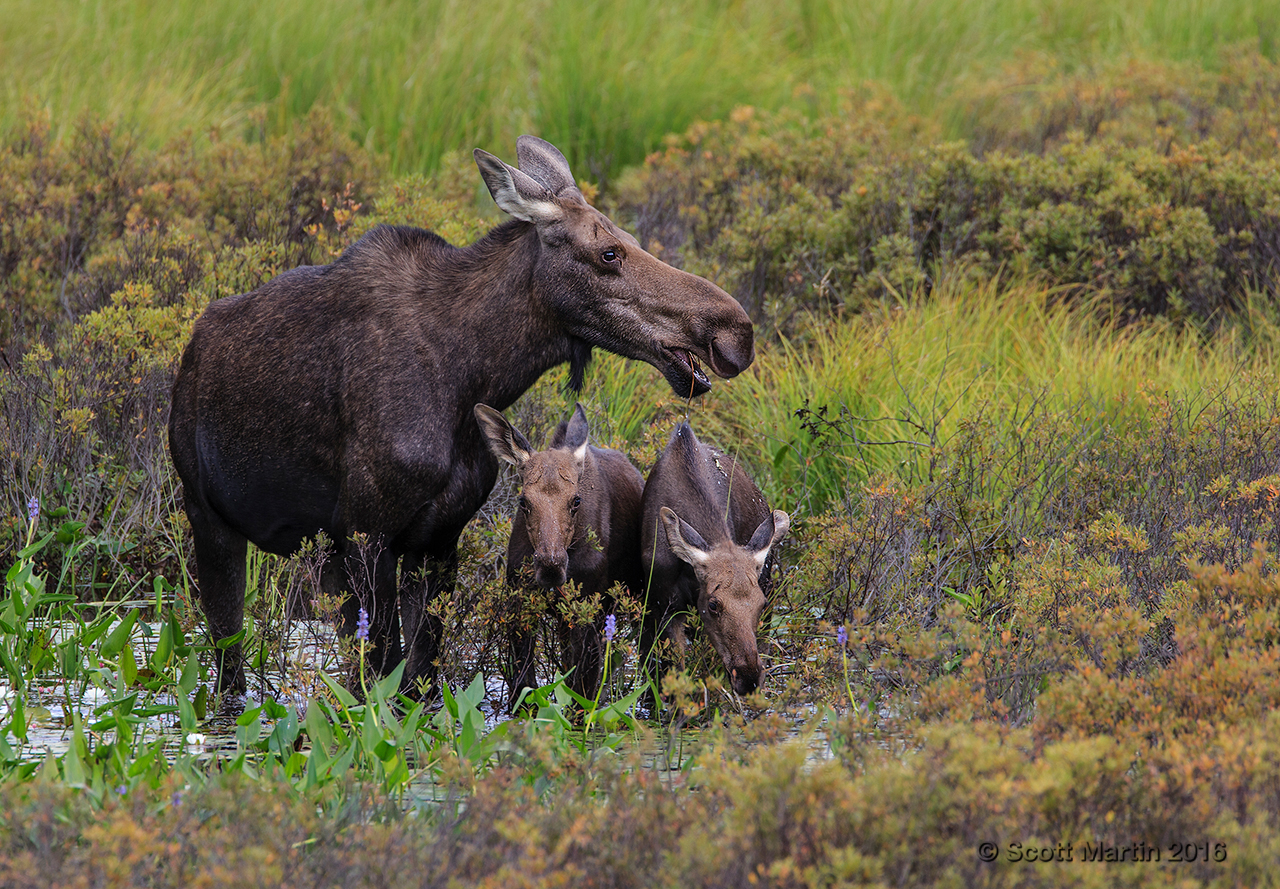
Another cow with a single calf alongside Highway 60 that runs through Algonquin Park.
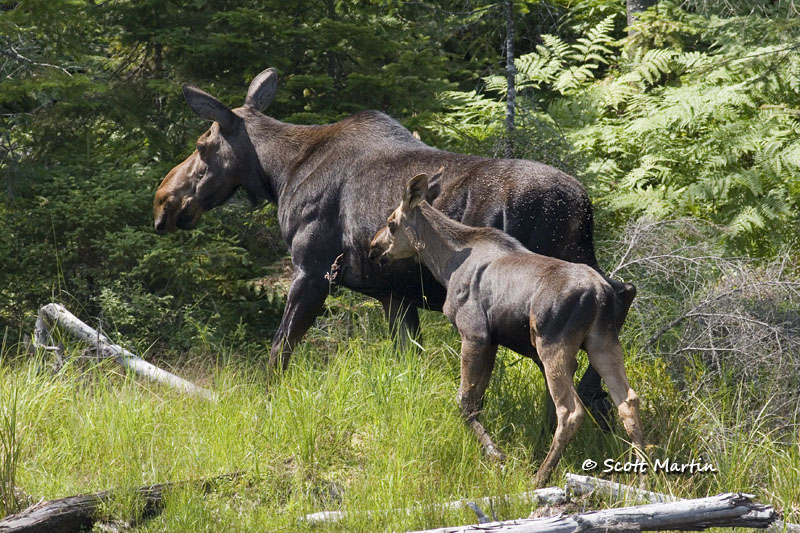
An inquisitive calf with mom watching closely in the back ground along the Mizzy Lake Trail.
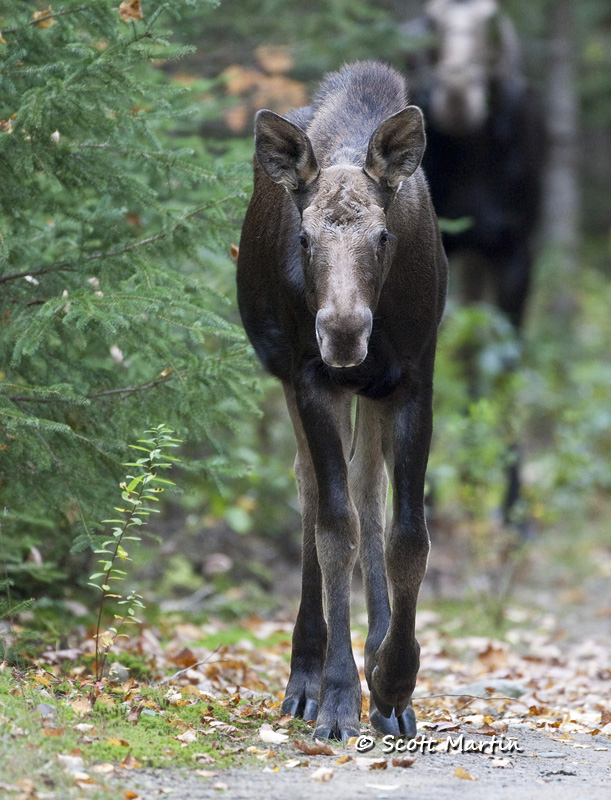
Another young family near Lake of Two Rivers along the edge of the Madawaska River.
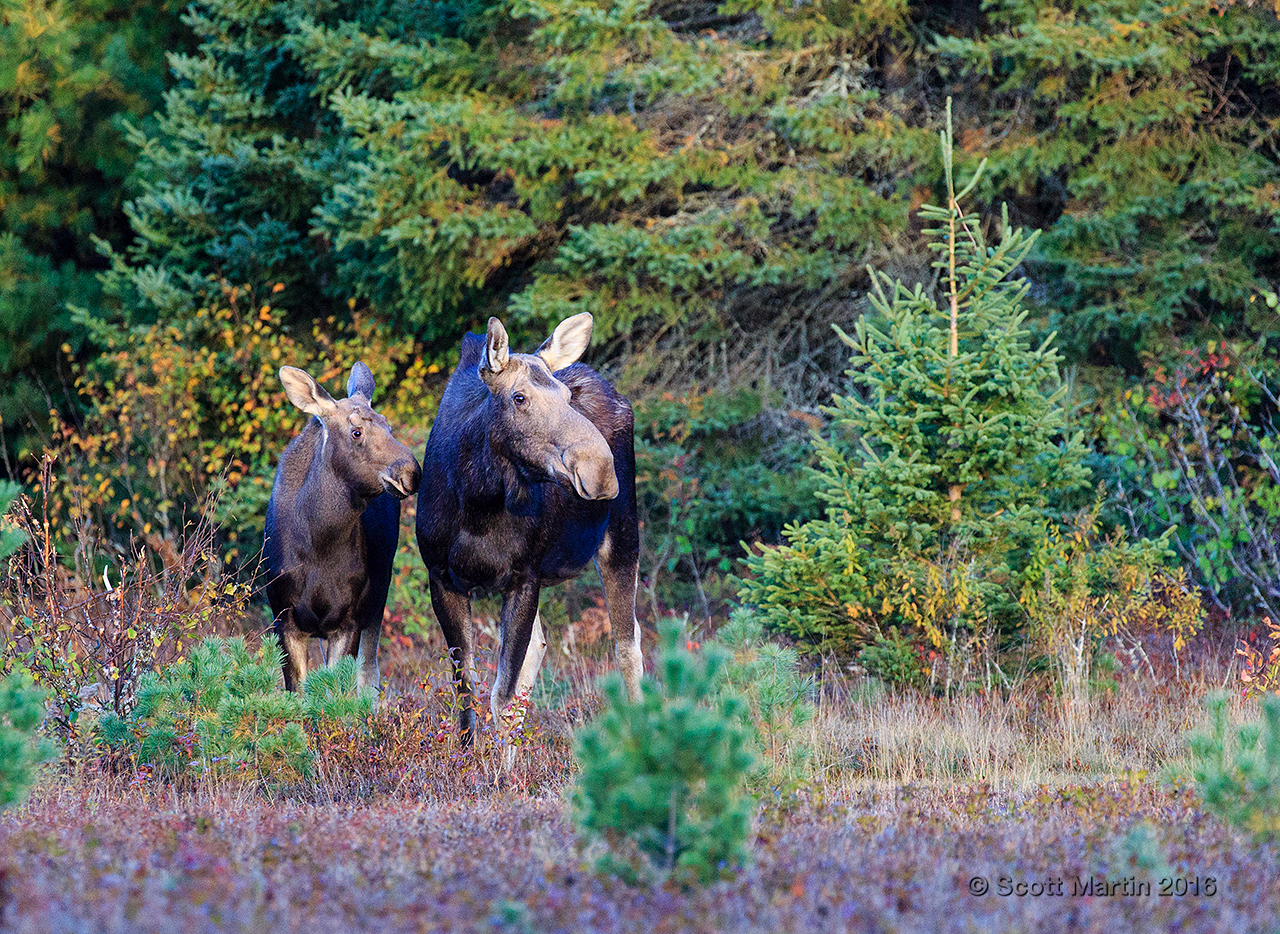
A portrait of the cow.
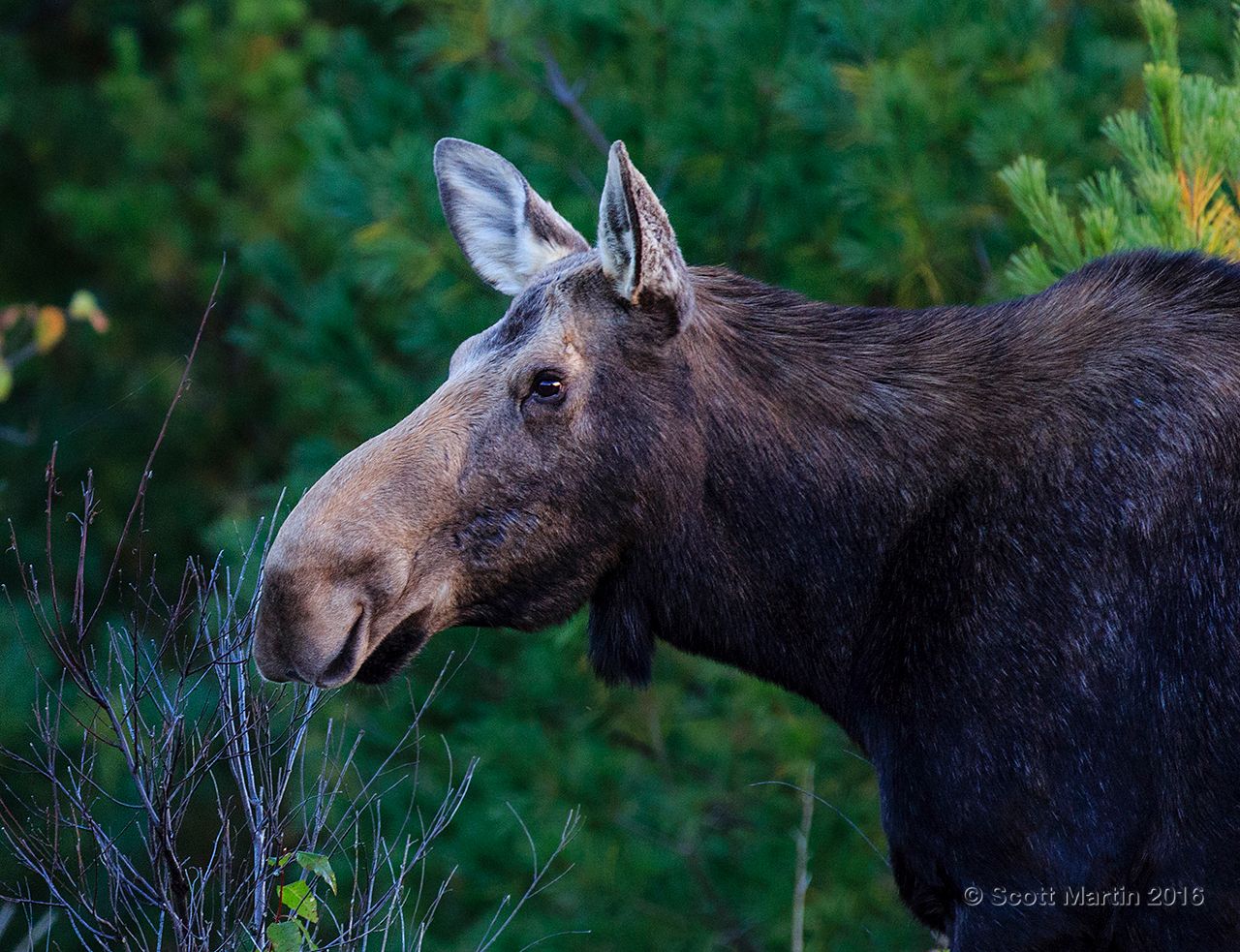
….and a young calf in the meadow.
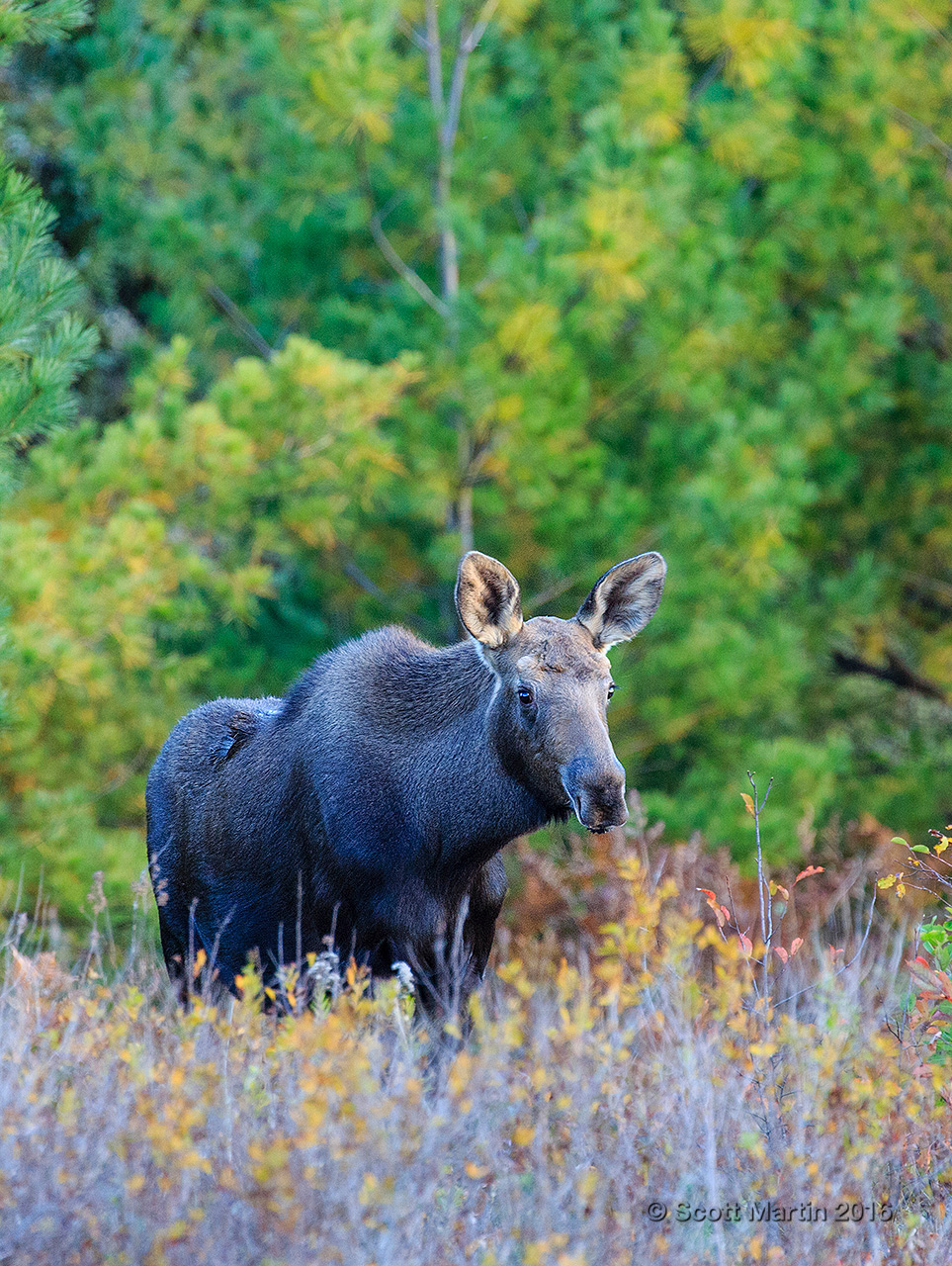
These next two images are included to provide a profile of the cow and calf. The biggest difference between the two is found in the head shape.
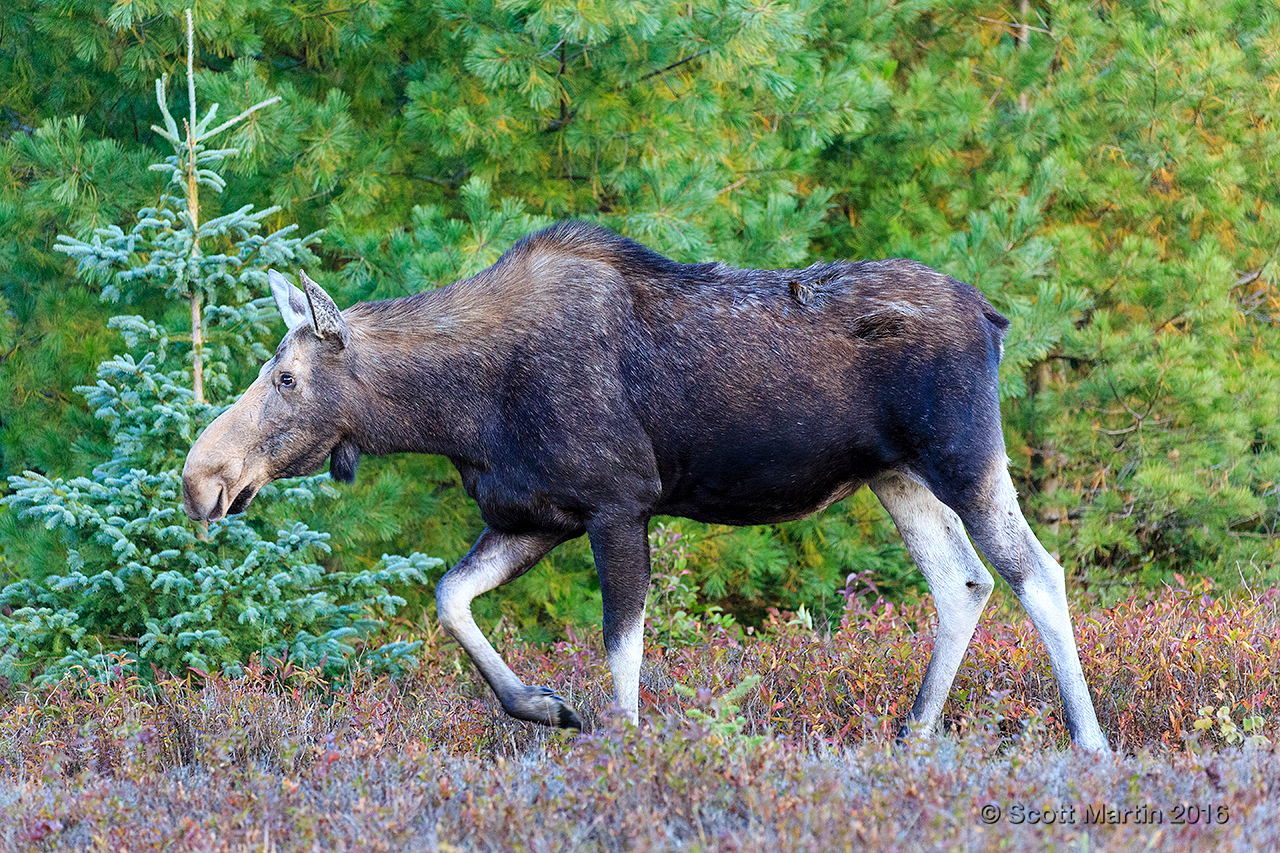
Moose are the second largest animals in North America (the Bison is the largest) with shoulder heights ranging from 4.5 to 6.9′.
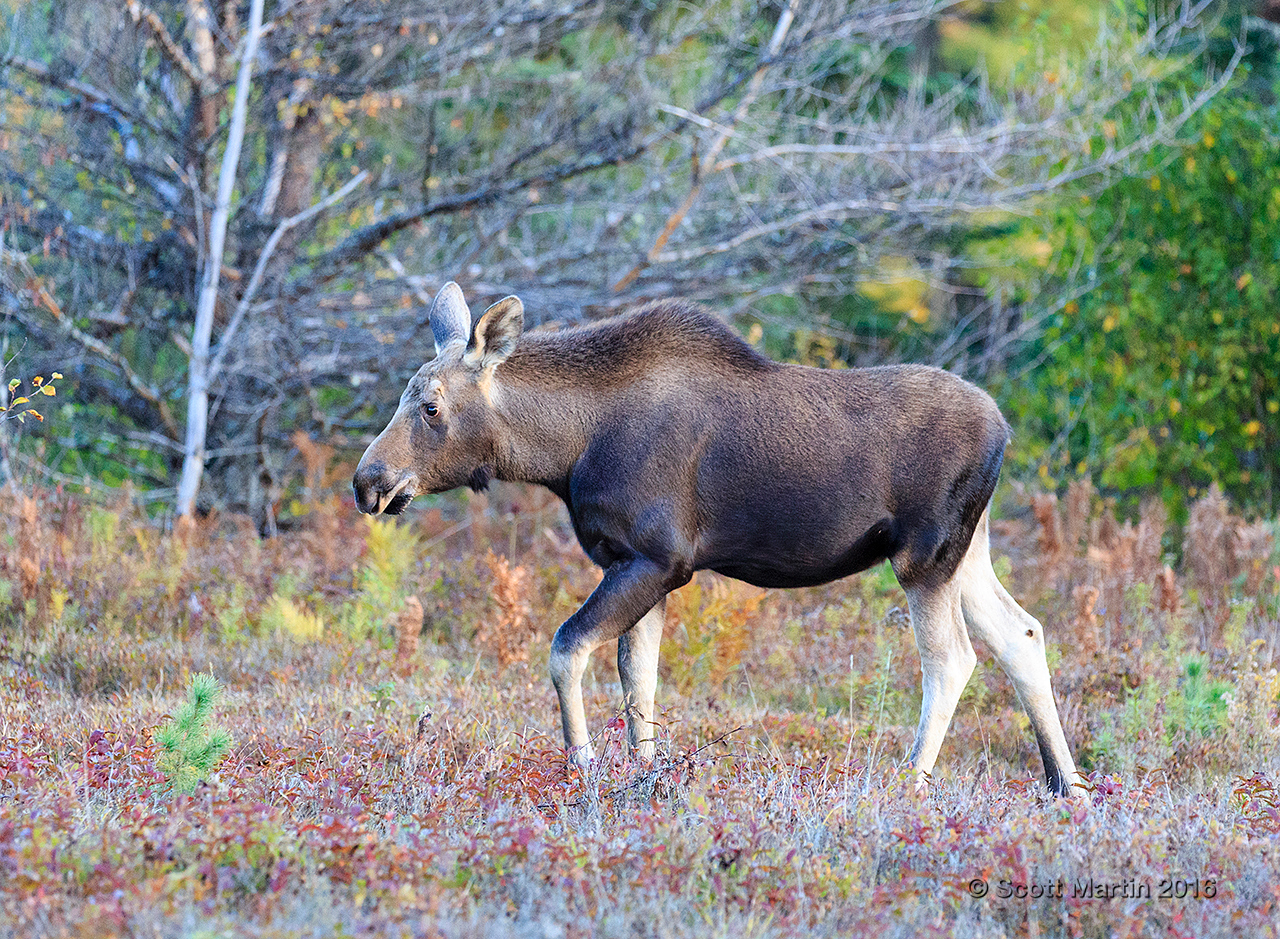
Over the past month I’ve visited Algonquin Park and been blessed to see and photograph a bull moose a number of times. This first image of a bull was taken a few years ago in June when the antlers are early in the growth stage and covered with velvet as mentioned earlier.
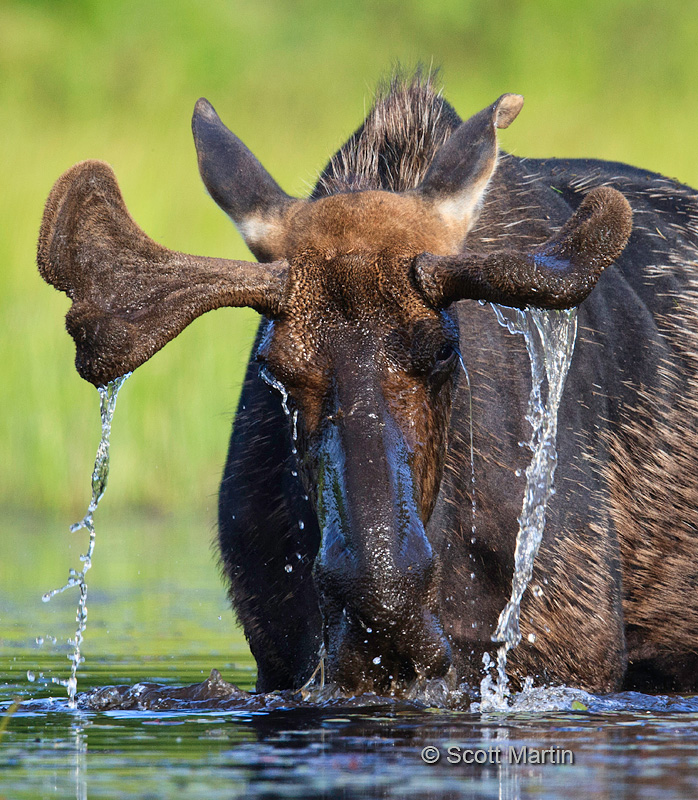
In the early fall the bull moose sheds its velvet and the antlers are revealed. Antlers are used for displaying to potential cows and challenging any bulls that may encroach on a cow that has shown interest in another bull. This next image shows the antlers of a fairly young bull moose, probably two years old based on the size and shape of the antlers.
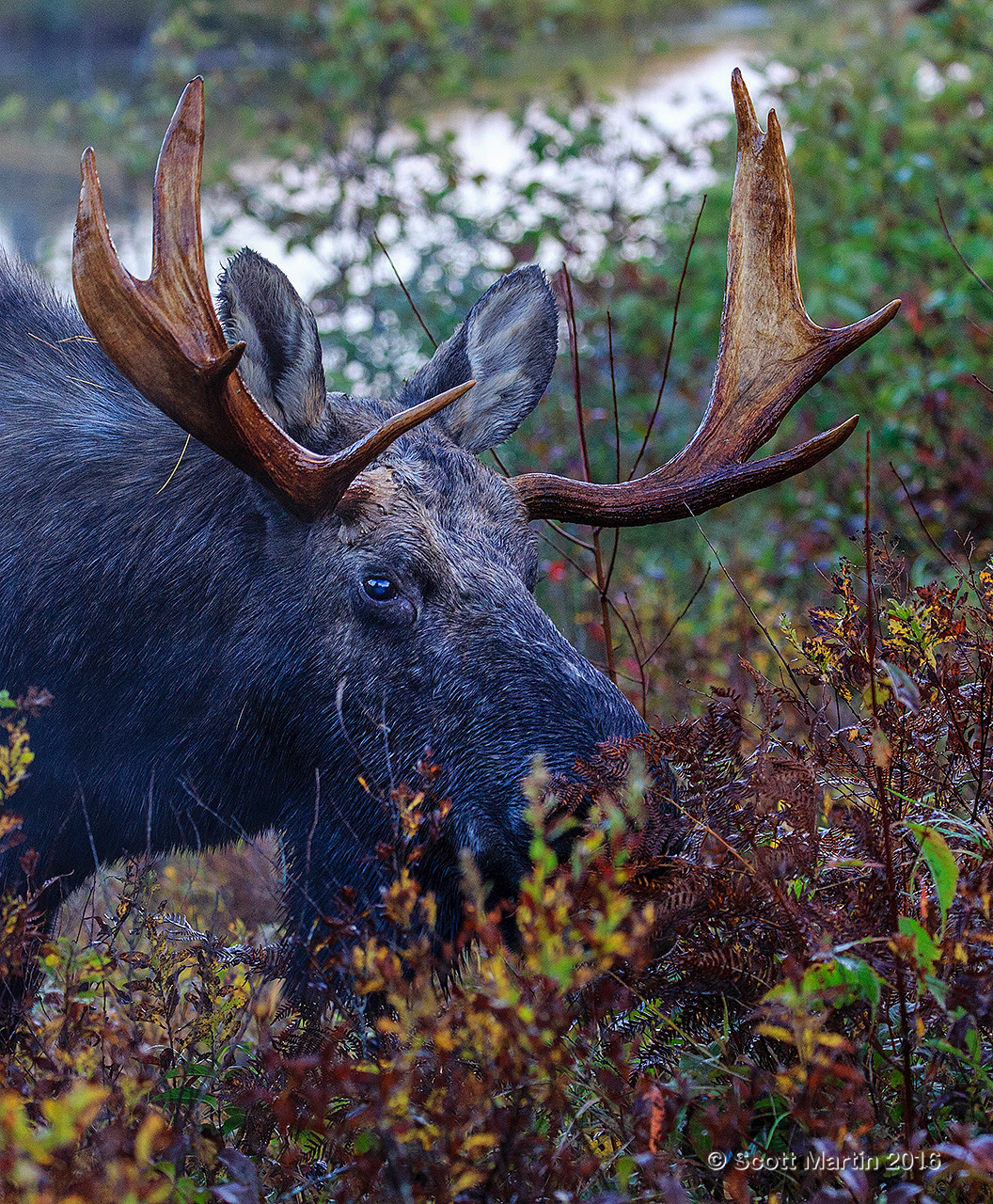
This bull moose was photographed just after sunrise and the autumn leaves provided a great back drop.
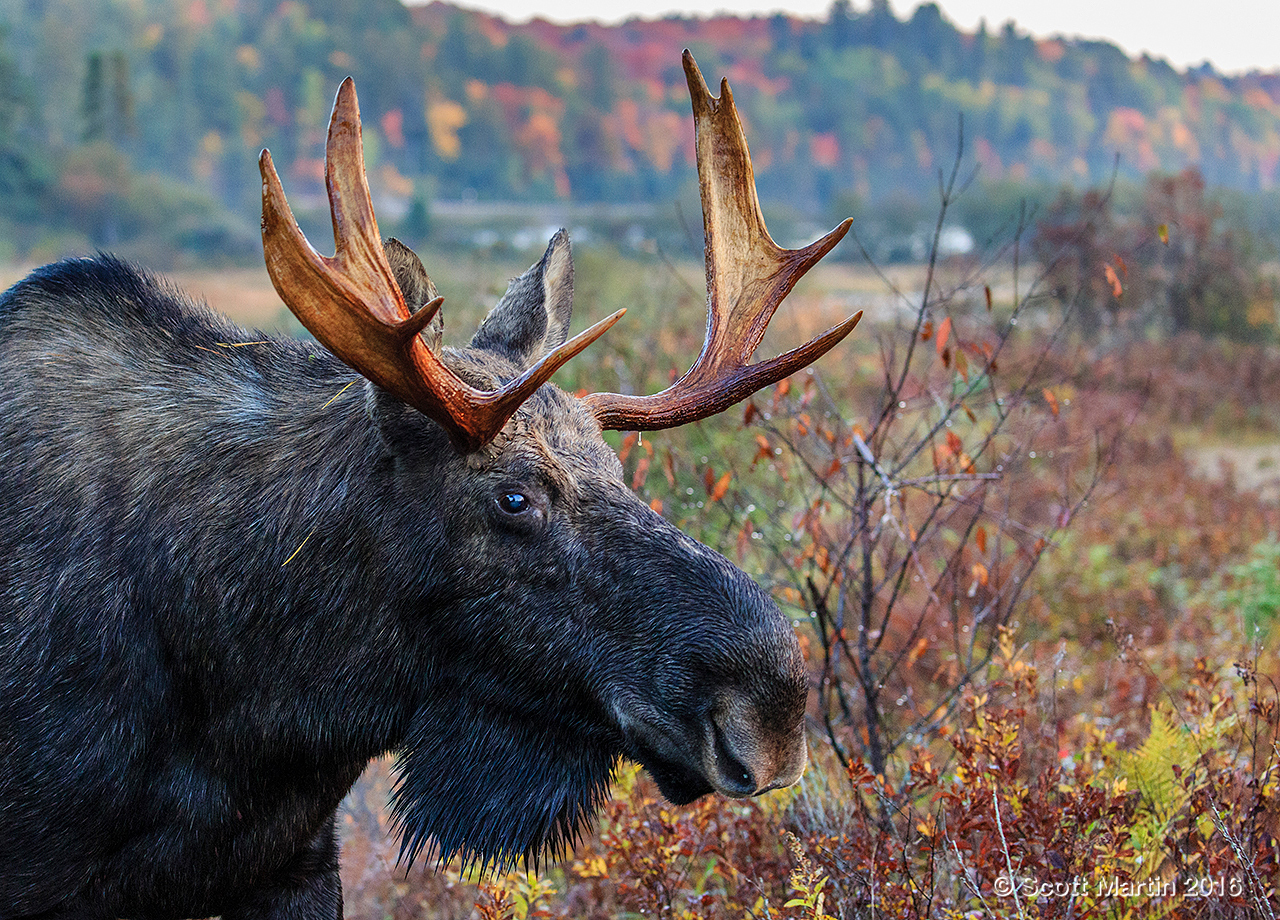
I was surprised that this moose ambled slowly by and bedded down at the edge of a large meadow for about half an hour.
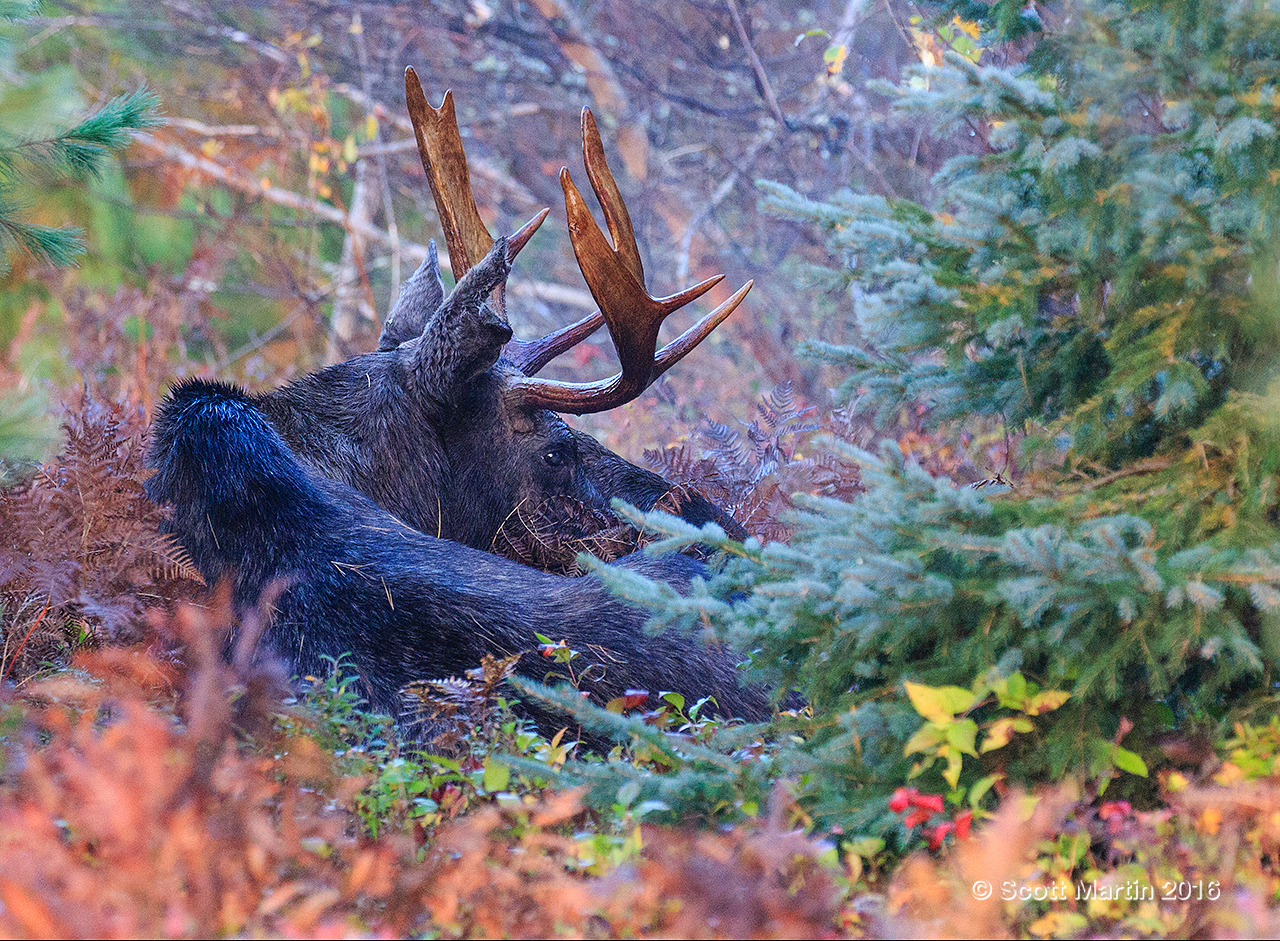
Adult bull moose weigh between 850 and 1,550 pounds while the cows are a little smaller ranging from 450 to 1,100 pounds.
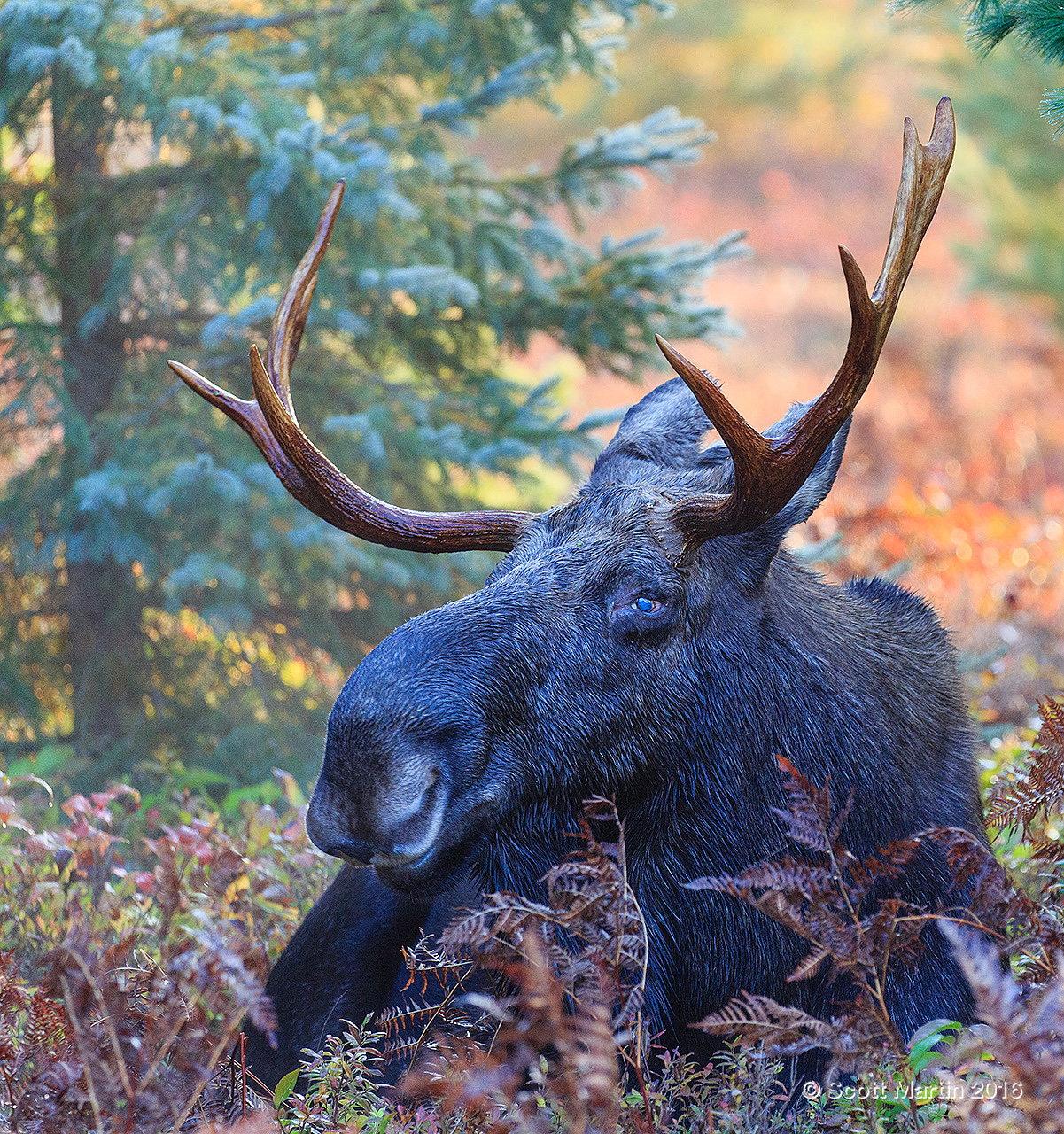
After resting for about thirty minutes the young bull got up and continued in his morning grazing.
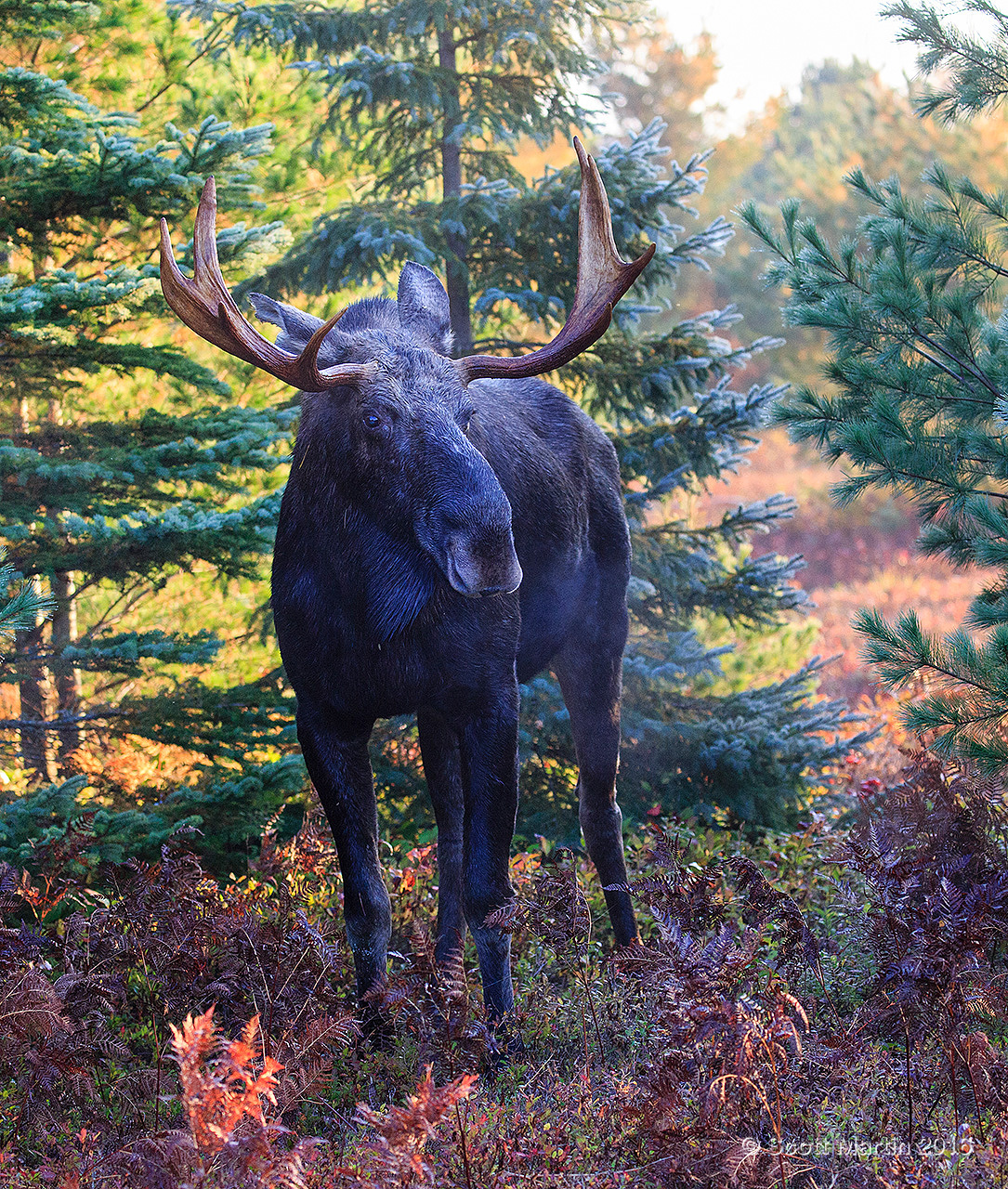
Moose are vegetarians and aptly named as ‘moose’ is a Native Algonquin word meaning ‘twig eater’. Their diet tends to be more aquatic in the spring and terrestrial in the fall and they typically eat leaves, bark, pine cones, twigs, buds of trees and lily pads. This next image shows the twig eater living up to its name!
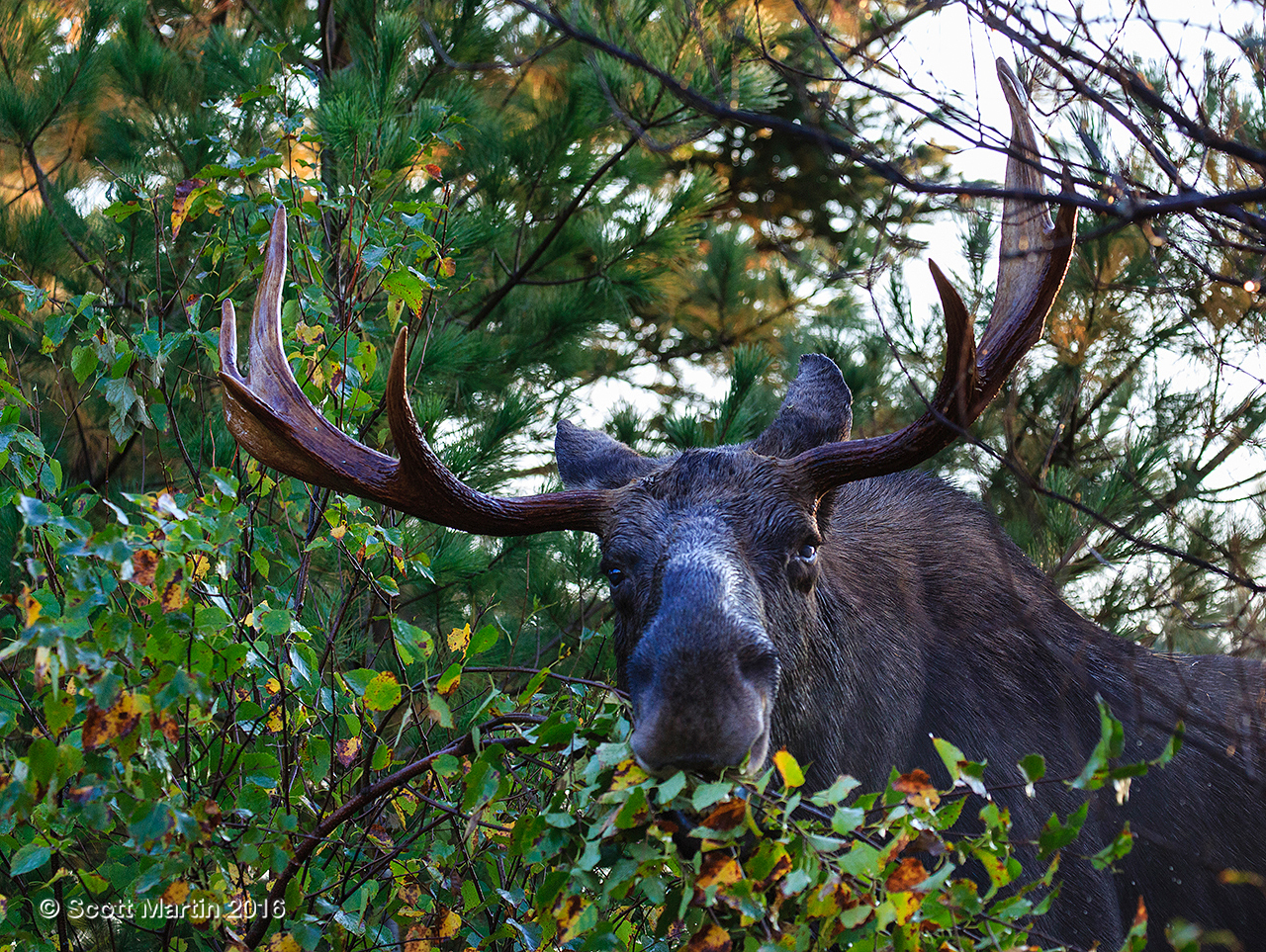
In mid September it was 0°C before sunrise which created an extremely heavy fog around the lake where we were looking for moose. Walking along a trail we were excited to see three moose silhouettes just ahead of us, a calf, a cow and a bull all together, but the fog was so thick it was almost impossible to take a good picture. We watched them feeding for about 15 minutes and as the sun came up there was just enough light to get a couple of images .
This shot of the cow and calf was taken just after the sun had risen immediately behind the moose, creating a subtle back-lit glow.
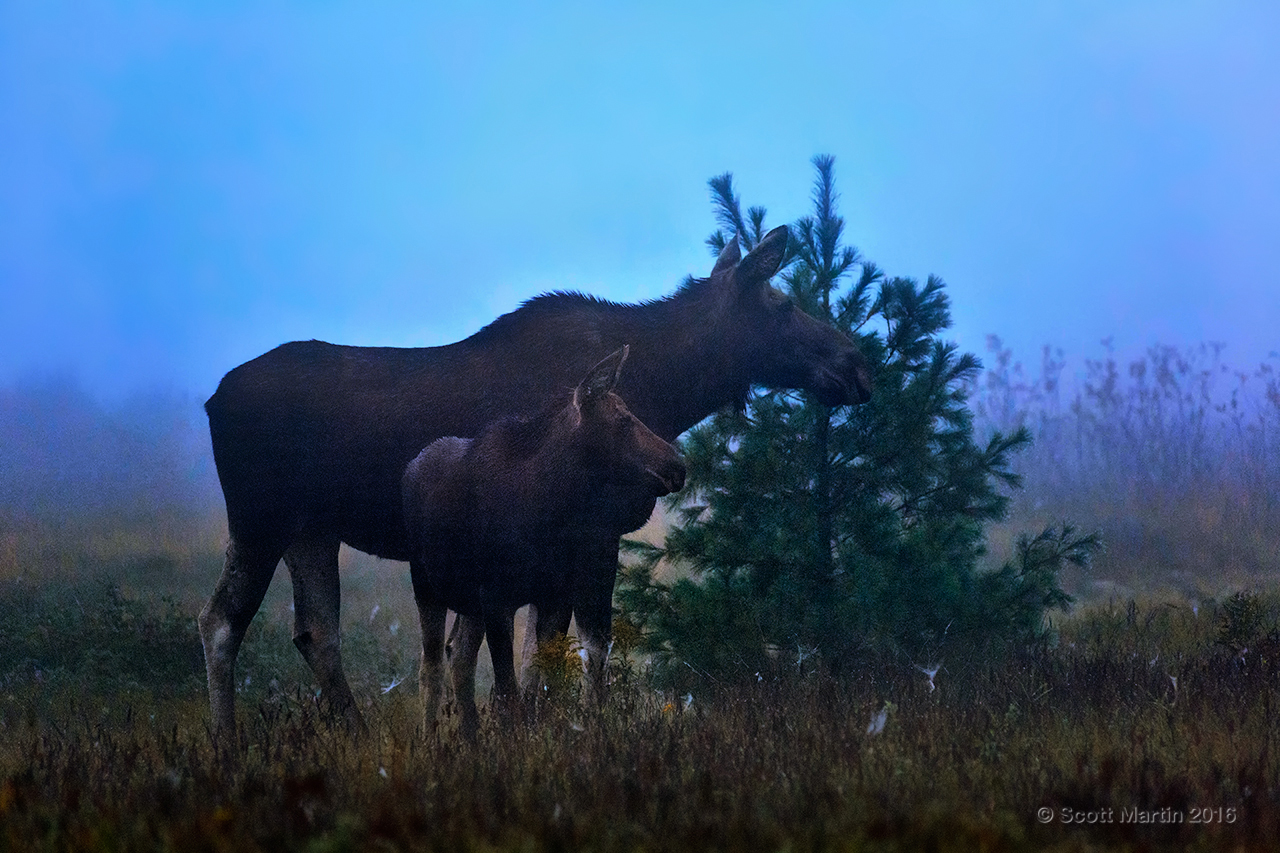
This last image of a bull was taken about ten minutes before sunrise using an ISO of 4000 and aperture of f5 which was necessary to allow a shutter speed fast enough to prevent motion blur of the moose as it was walking toward the tree. You can see why photographers refer to the time before sunrise as the ‘blue hour’.
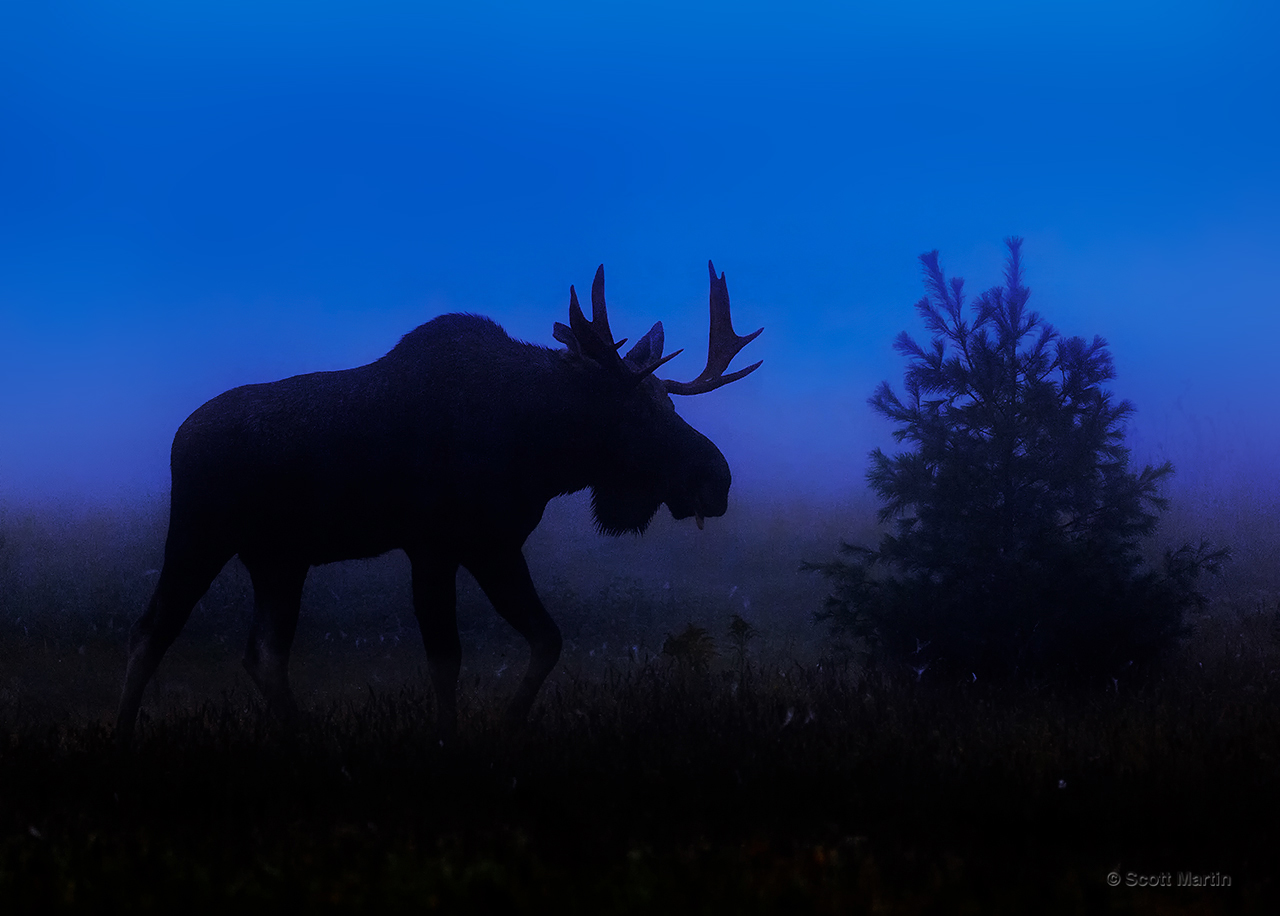
I trust you have enjoyed these photographs of our majestic Canadian gentle giants. Many more moose images may be seen via this link to the Wildlife Gallery.
Please feel free to share this blog with others and as always your questions and comments are very much appreciated.

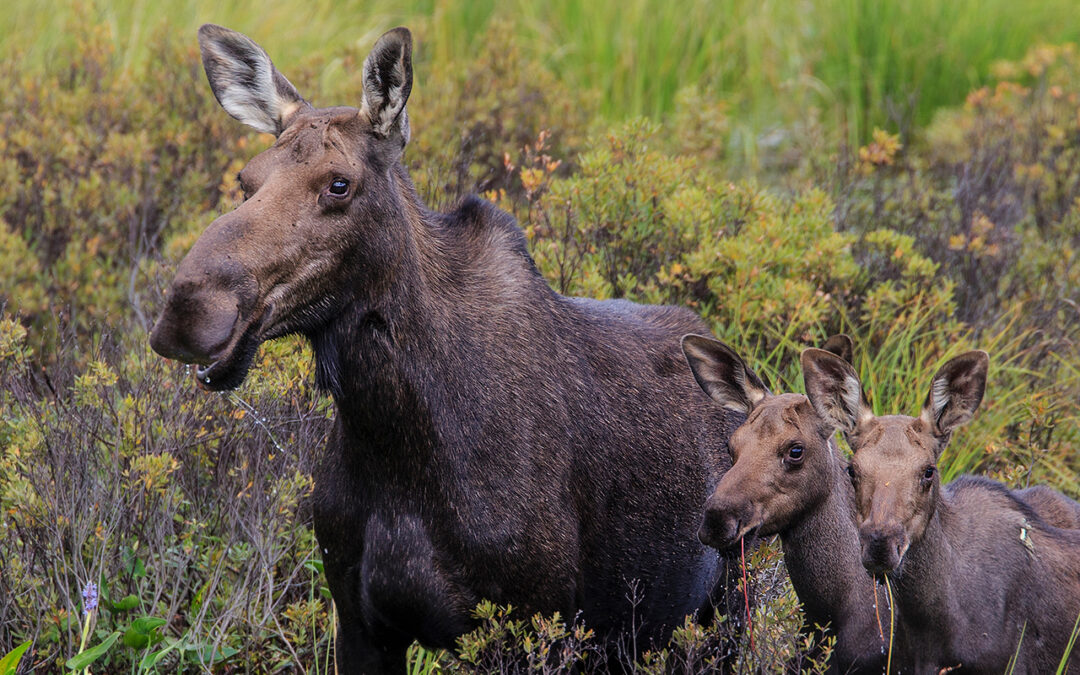
An incredible selection of images Scott, you were pretty lucky this year. As difficult as it is, my favourite is the last one which is a winner for me.
Thanks Arni…I think my favourite is the one taken with your lens 🙂
Scott, as always your photographs are wonderful. You manage to get the best of the subject and the background and I really enjoy getting your blogs on my email. Thank you for sharing your enthusiasm for God’s creatures and creation.
Thanks Donna and I’m so happy you enjoy following the blog. God’s handiwork is everywhere and what a joy it is to photograph.